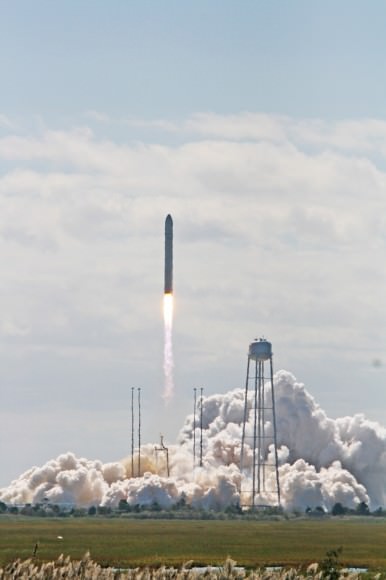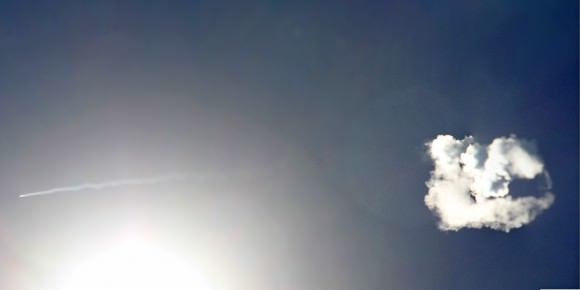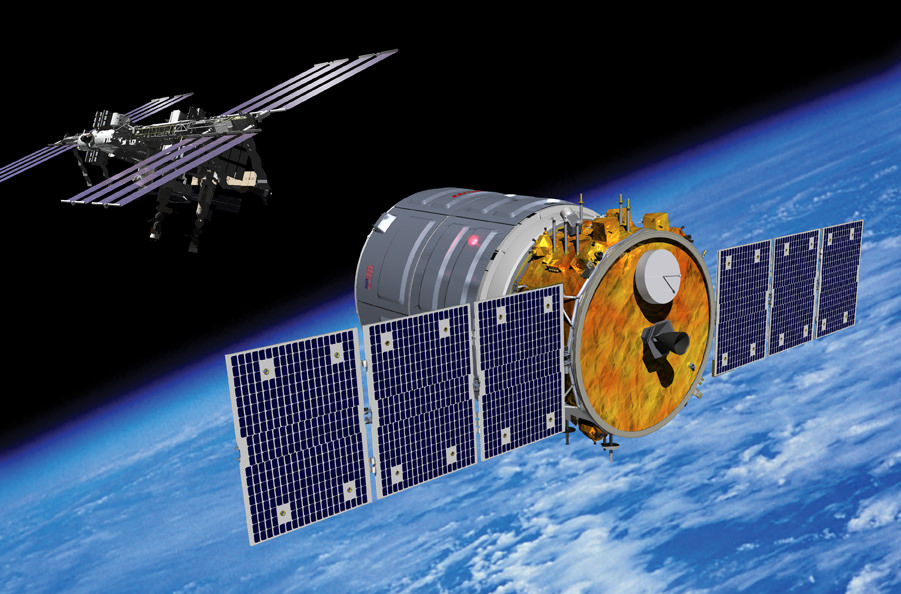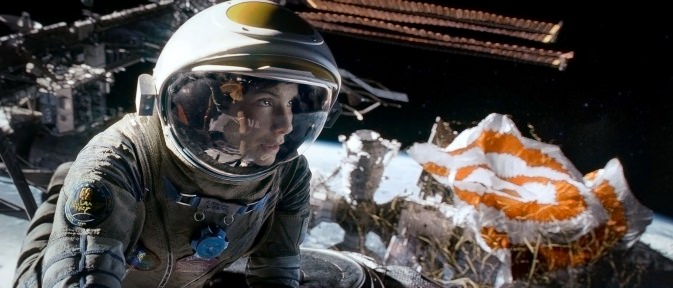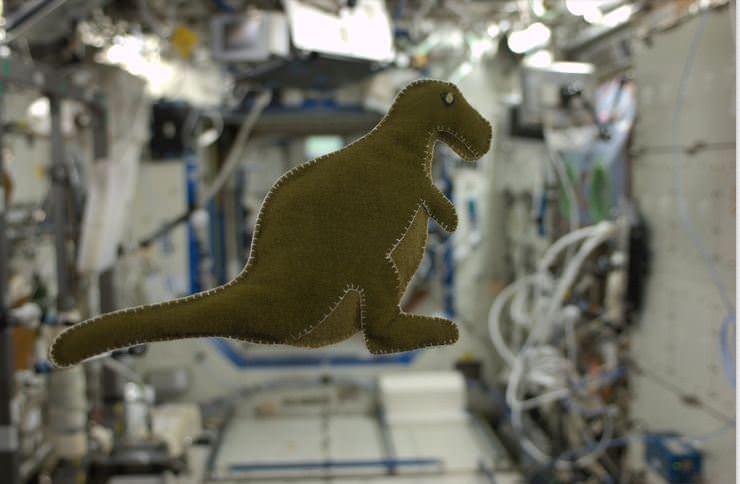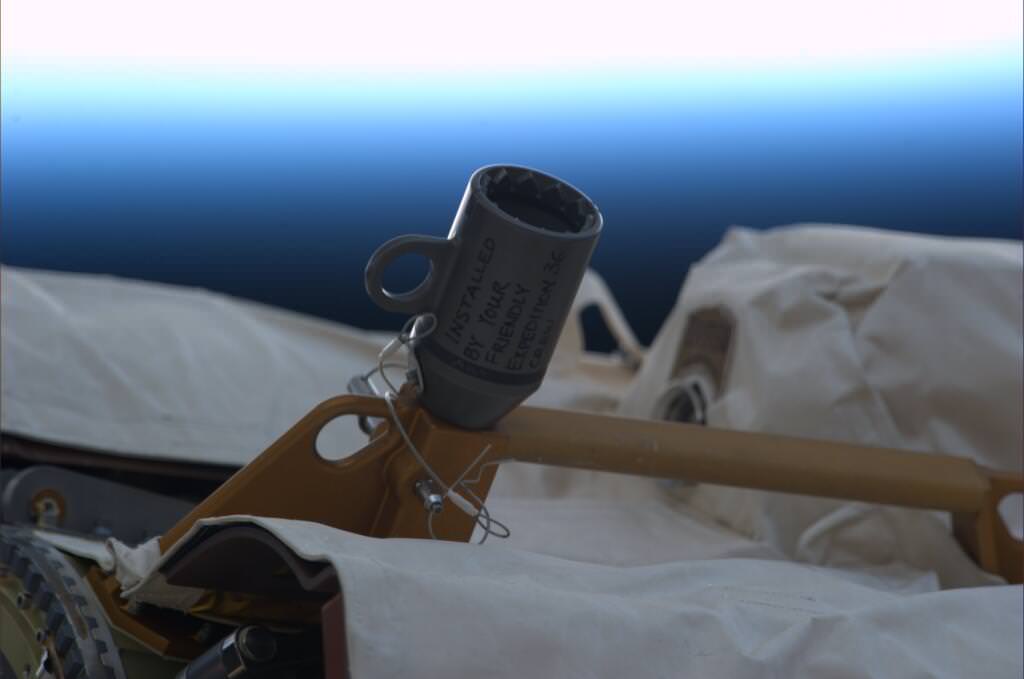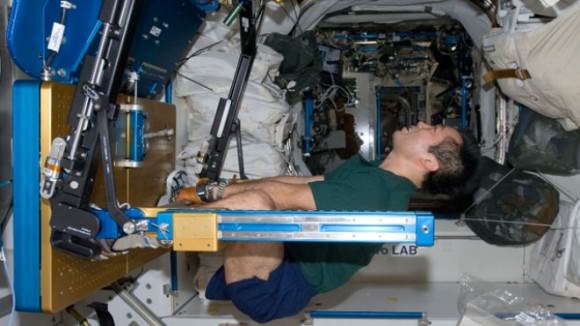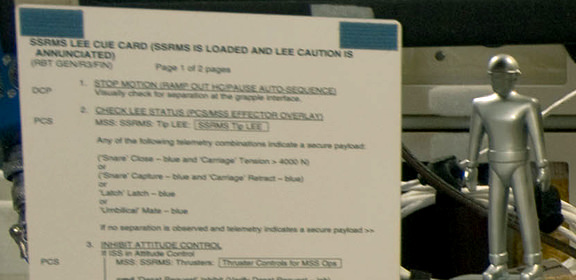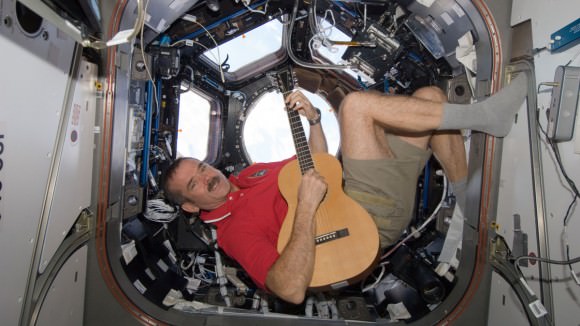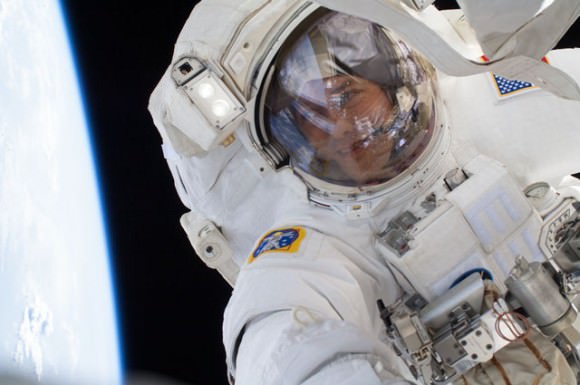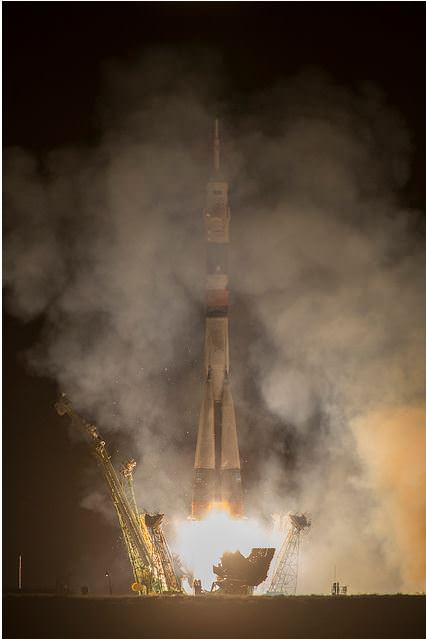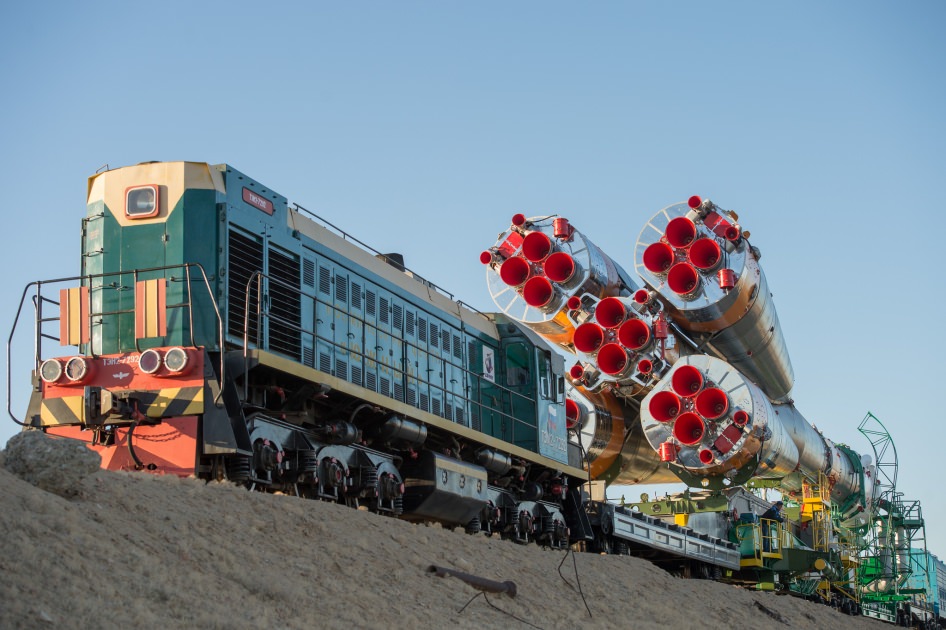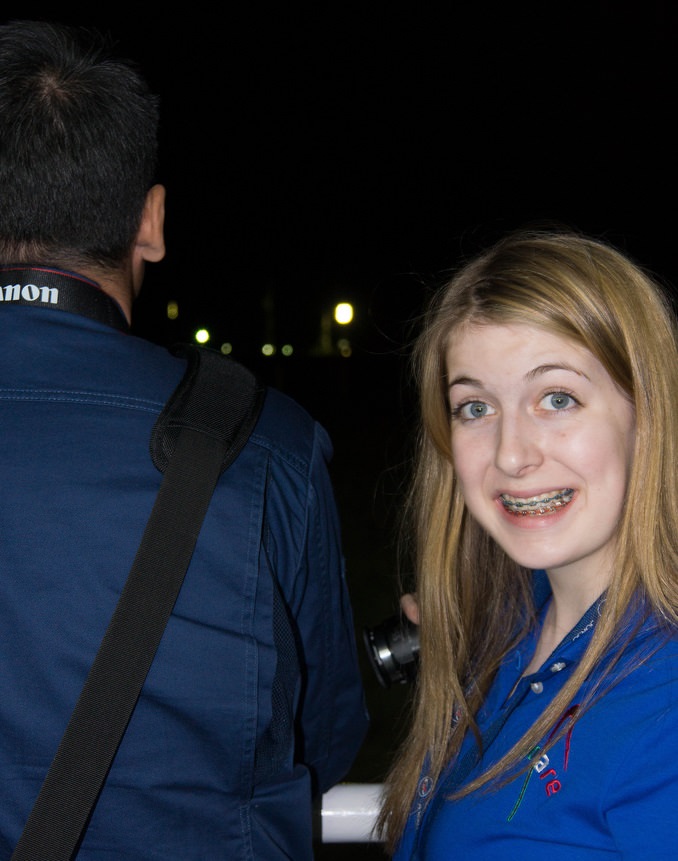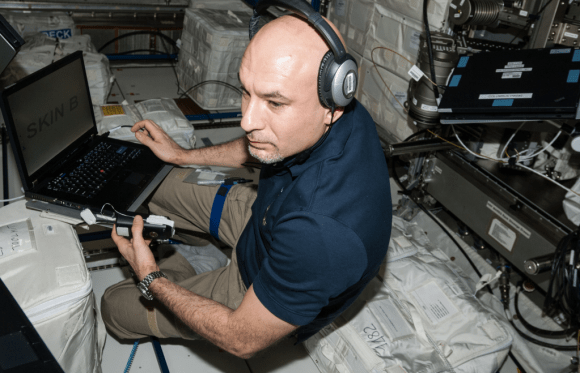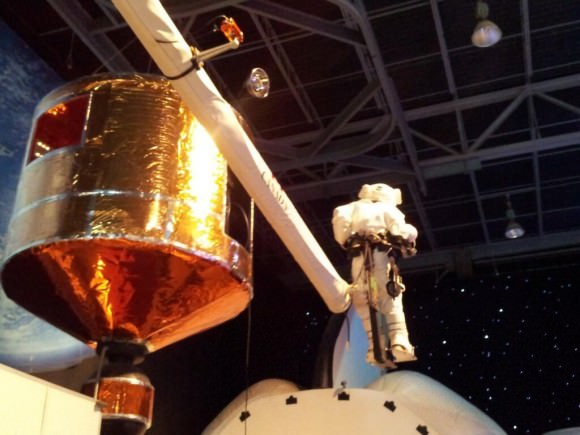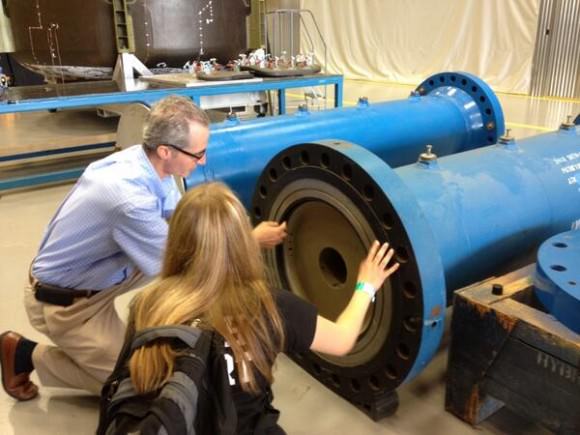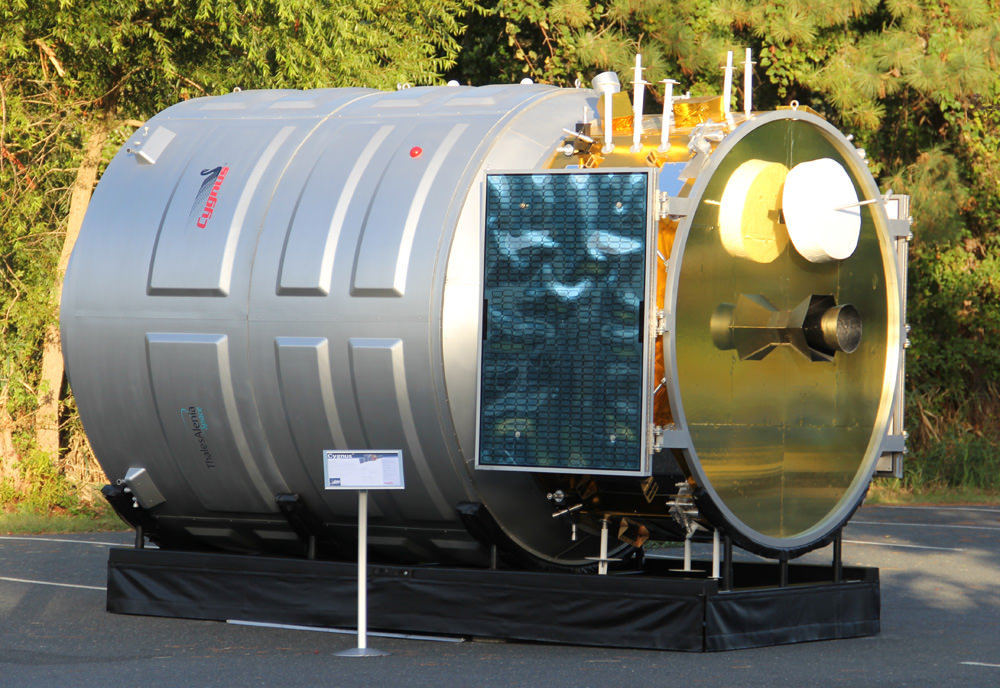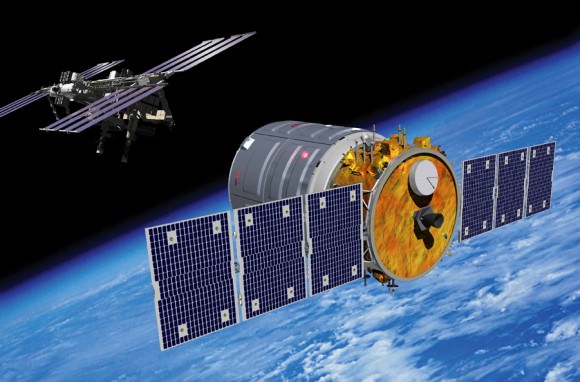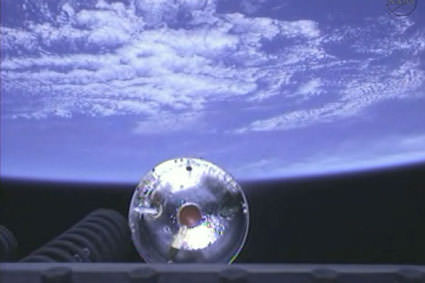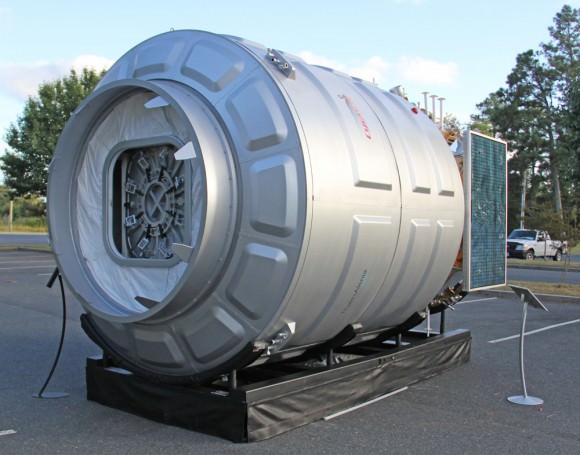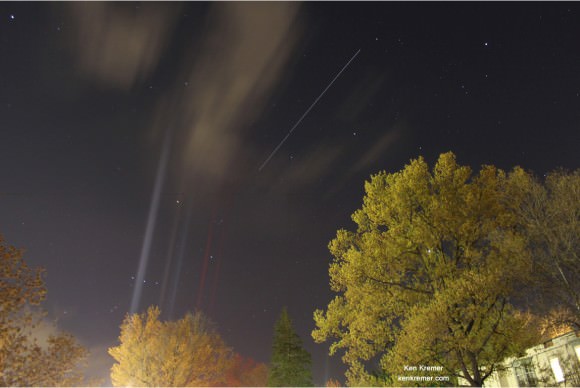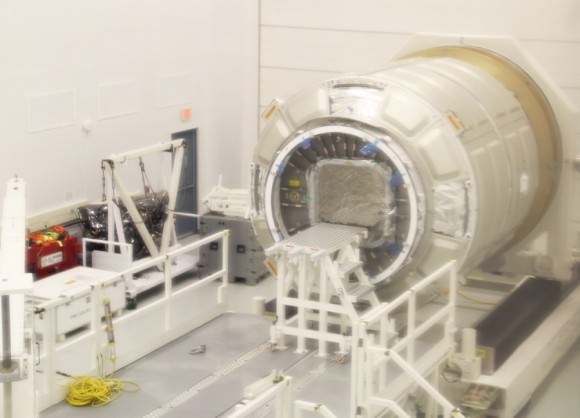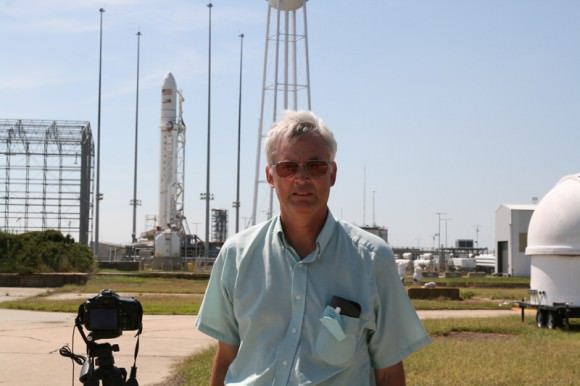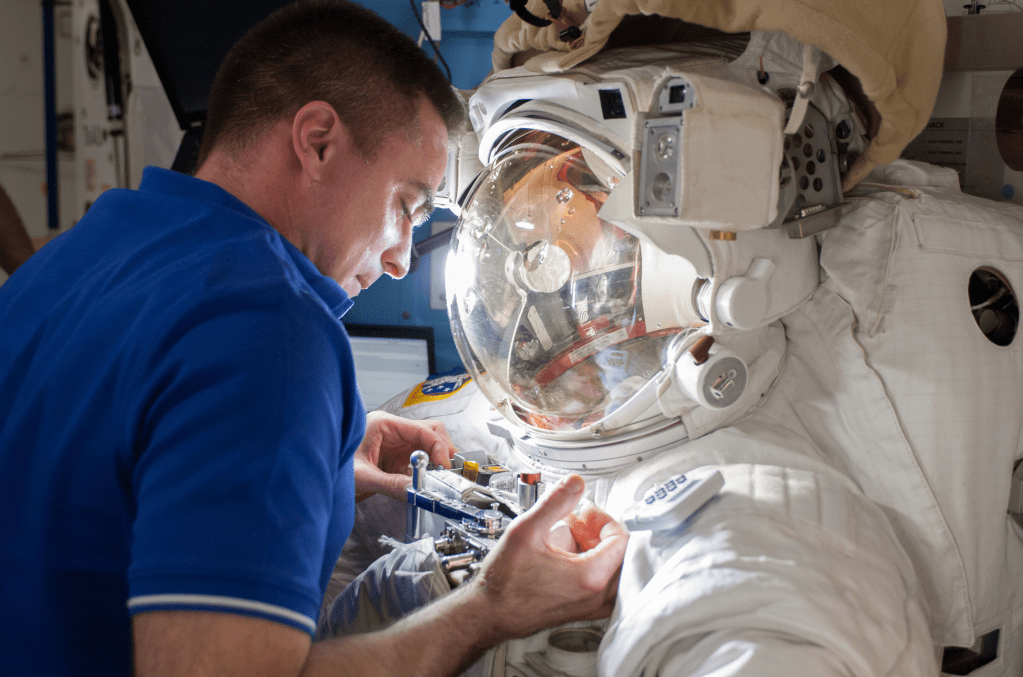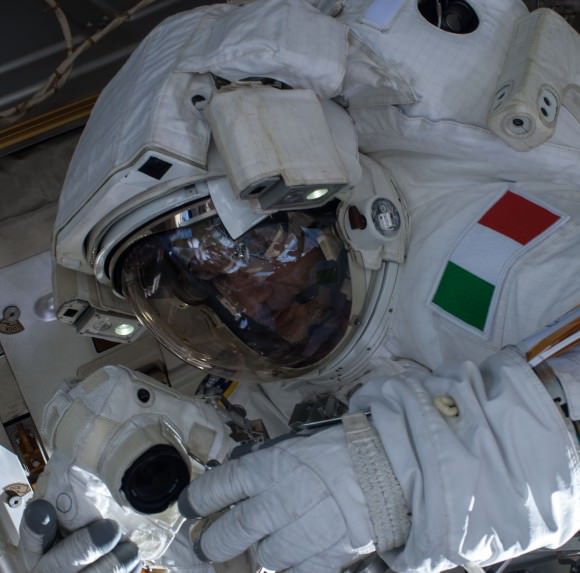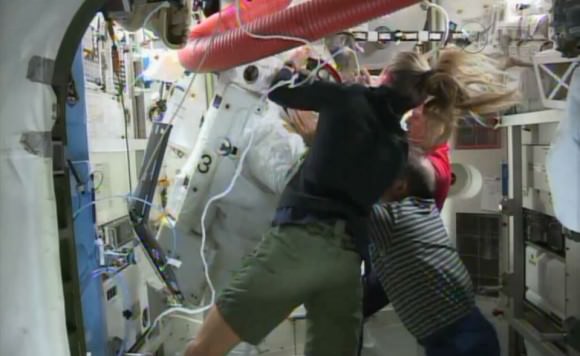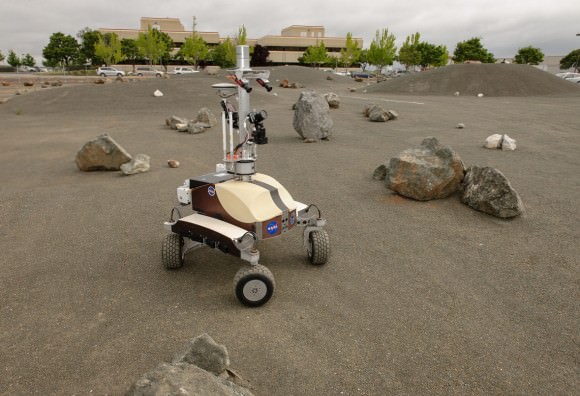The Cygnus cargo spacecraft is just a few feet away from the International Space Station’s Canadarm2 during rendezvous and berthing on Sept 29, 2013. Credit: NASA
Updated – See Falcon 9 launch video below[/caption]
Today (Sept. 29) was a doubly historic day for private spaceflight! And a boon to NASA as well!
Early this morning the Orbital Sciences Cygnus commercial cargo ship docked at the International Space Station (ISS) speeding along some 250 miles (400 km) overhead in low Earth orbit.
Barely a few hours later the Next Generation commercial SpaceX Falcon 9 rocket soared to space on a demonstration test flight from the California coast carrying a Canadian satellite to an elliptical earth orbit.
These missions involved the dramatic maiden flights for both Cygnus and the upgraded Falcon 9.
And both were high stakes endeavors, with literally billions of dollars and the future of commercial spaceflight, as well as the ISS, on the line. Their significance cannot be overstated!
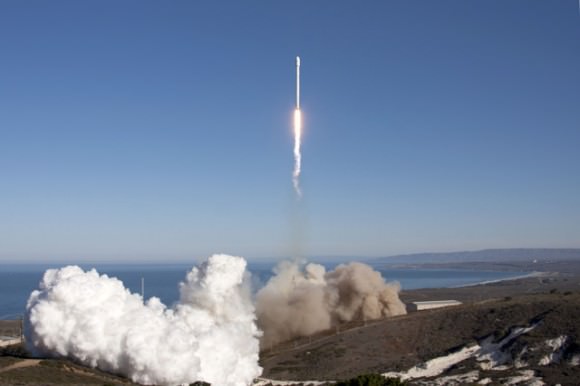
Both Cygnus and Falcon 9 were developed with seed money from NASA in a pair of public-private partnerships between NASA and Orbital Sciences and SpaceX under NASA’s COTS commercial transportation initiative aimed at fostering the development of America’s private space industry to deliver critical and essential supplies to the ISS.
The powerful new Falcon 9 will also be used to send cargo to the ISS.
America completely lost its capability to send humans and cargo to the ISS when NASA’s space shuttles were retired in 2011. Orbital Sciences and SpaceX were awarded NASA contracts worth over $3 Billion to restore the unmanned cargo resupply capability over 20 flights totally.
The Cygnus spacecraft put on a spectacular space ballet – and was no worse for the wear after its docking was delayed a week due to an easily fixed communications glitch.
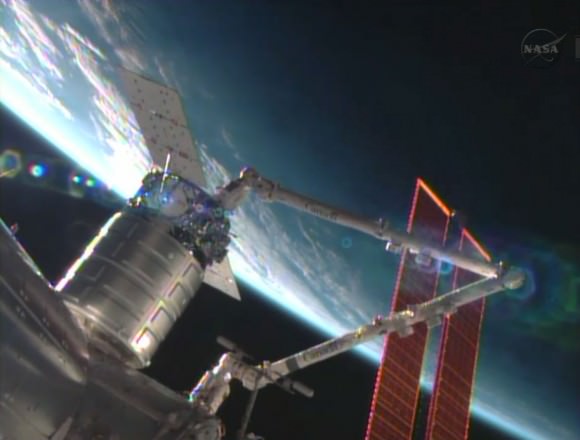
Credit: NASA TV
Cygnus is a privately developed resupply vessel built by Orbital Sciences Corp and Thales Alenia Space that is a crucial railroad to orbit for keeping the massive orbital lab complex well stocked with everyday essentials and science experiments that are the purpose of the ISS.
Cygnus was grappled in free drift by Expedition 37 space station astronauts Luca Parmitano and Karen Nyberg at about 7 a.m. EDT Sunday morning.
The pair were working at two robotics work stations from inside the Cupola and Destiny modules. They used the stations 57 foot long Canadarm2 to snare Cygnus at a distance of about 30 feet (10 meters). They gradually motioned the arm closer.
Running a bit ahead of schedule they successfully berthed Cygnus at the earth facing port of the Harmony module by about 8:44 a.m. EDT.
Cygnus was launched to orbit on its inaugural flight on Sept. 18 atop Orbital’s commercial Antares rocket from NASA’s Wallops Flight Facility on the Eastern shore of Virginia.
Sept. 22 had been the initially targeted station docking date for this demonstration mission.
Hatches to Cygnus will be opened on Monday, Sept. 30 after completing leak checks.
“Today, with the successful berthing of the Orbital Sciences Cygnus cargo module to the ISS, we have expanded America’s capability for reliably transporting cargo to low-Earth orbit, “ said NASA Admisistrator Charles Bolden in a statement.
“It is an historic milestone as this second commercial partner’s demonstration mission reaches the ISS, and I congratulate Orbital Sciences and the NASA team that worked alongside them to make it happen.”
“Orbital joins SpaceX in fulfilling the promise of American innovation to maintain America’s leadership in space. As commercial partners demonstrate their new systems for reaching the Station, we at NASA continue to focus on the technologies to reach an asteroid and Mars,” said Bolden.
Cygnus delivers about 1,300 pounds (589 kilograms) of cargo, including food, clothing, water, science experiments, spare parts and gear to the Expedition 37 crew.
The upgraded SpaceX Falcon 9 blasted off from Space Launch Complex 4 at Vandenberg Air Force Base in California at 9 a.m. PDT (12 p.m. EDT).
Here’s a video of the launch:
It successfully deployed Canada’s 1,060 pound (481 kg) Cascade, Smallsat, and Ionospheric Polar Explorer (CASSIOPE) weather satellite and several additional small satellites.
This powerful new version of the Falcon 9 dubbed v1.1 is powered by a cluster of nine of the new Merlin 1D engines that are about 50% more powerful compared to the standard Merlin 1C engines and can therefore boost a much heavier cargo load to the ISS and beyond.
The next generation Falcon 9 is a monster. It’s much taller than a standard Falcon 9 – some 22 stories vs. 13.
It could launch from Cape Canaveral as early as this Fall.
…………….
Learn more about Cygnus, Antares, SpaceX, Curiosity, Mars rovers, MAVEN, Orion, LADEE and more at Ken’s upcoming presentations
Oct 3: “Curiosity, MAVEN and the Search for Life on Mars – (3-D)”, STAR Astronomy Club, Brookdale Community College & Monmouth Museum, Lincroft, NJ, 8 PM
Oct 8: NASA’s Historic LADEE Lunar & Antares/Cygnus ISS Rocket Launches from Virginia”; Princeton University, Amateur Astronomers Assoc of Princeton (AAAP), Princeton, NJ, 8 PM
